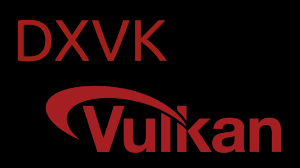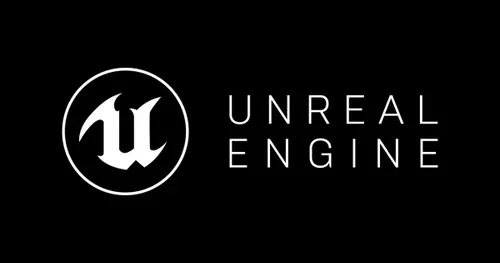DXVK stands at the forefront of gaming innovation, bridging the gap between Windows-centric DirectX APIs and the open-source world of Linux. For gamers and developers alike, this Vulkan-based translation layer opens doors to running legacy titles without the headaches of native compatibility layers. Questions about DXVK’s support for DirectX 9 frequently arise, especially among enthusiasts migrating Steam libraries to Proton or Wine setups. This article dives deep into the mechanics, benefits, and nuances of DXVK’s DX9 handling, ensuring you grasp its full potential.
Understanding DXVK’s role requires appreciating its evolution from a niche tool to a cornerstone of cross-platform gaming. Born out of the need to harness Vulkan’s efficiency, DXVK translates Direct3D calls into native Vulkan commands, slashing overhead and boosting frame rates. DirectX 9, the workhorse behind countless classics from the early 2000s, finds renewed life through this layer. Whether you’re firing up Half-Life 2 or battling in World of Warcraft, DXVK ensures these gems shine on modern hardware, free from Proton’s broader abstractions.
As we explore further, expect insights into setup, performance tweaks, and troubleshooting that elevate your experience. This guide equips you with actionable knowledge, optimized for searches on DXVK DirectX 9 compatibility, installation guides, and optimization tips. By the end, you’ll confidently wield DXVK to resurrect and enhance your DX9 favorites on Linux.
Understanding DXVK Fundamentals
Core Architecture of DXVK
DXVK operates as a state-of-the-art runtime library, intercepting Direct3D API calls at the DLL level. Developers embed it seamlessly into Wine or Proton environments, where it reroutes D3D9, D3D10, and D3D11 instructions to Vulkan shaders. This process minimizes CPU involvement, leveraging GPU parallelism for superior throughput. Key to its design, DXVK employs a device-independent model, abstracting hardware specifics while maintaining fidelity to original rendering pipelines. Gamers notice smoother visuals and reduced stuttering, particularly in shader-heavy scenes.
The library’s modular structure includes a D3D9 wrapper that maps legacy fixed-function pipelines to programmable shaders. This translation preserves effects like bump mapping and specular lighting without artifacts. Configuration files allow fine-tuning, such as enabling asynchronous shader compilation to dodge hitches during gameplay. For DX9 titles, this means titles like Morrowind render with modern anti-aliasing, enhancing immersion on high-resolution displays. Overall, DXVK’s architecture prioritizes low-latency execution, making it indispensable for retro gaming revivals.
Role of Vulkan in DXVK Translation
Vulkan serves as DXVK’s backbone, providing explicit control over GPU resources that DirectX glosses over. This low-level API exposes memory management and command buffers, allowing DXVK to batch draw calls efficiently. In DX9 contexts, Vulkan’s compute shaders emulate vertex processing, transforming fixed pipelines into dynamic ones. Developers benefit from Vulkan’s cross-vendor consistency, ensuring DXVK performs reliably across NVIDIA, AMD, and Intel hardware.
Integration with DXVK involves loading Vulkan extensions at runtime, validating device capabilities before initialization. For instance, DX9’s texture sampling maps directly to Vulkan samplers, retaining mipmapping accuracy. This synergy cuts draw call overhead by up to 90%, per benchmarks from Doitsujin Labs. Enthusiasts tweaking dxvk.conf can force specific Vulkan features, like variable rate shading, to optimize power draw on laptops. Ultimately, Vulkan empowers DXVK to deliver DX9 experiences that rival native Windows performance.
Compatibility Layers Beyond DXVK
While DXVK focuses on D3D translation, it complements broader layers like WineD3D for software rendering fallbacks. In hybrid setups, DXVK handles hardware-accelerated paths, deferring to OpenGL via Wine for unsupported extensions. This layered approach extends DX9 support to edge cases, such as multi-monitor DX9 apps. Proton’s integration bundles DXVK with additional patches, streamlining Steam launches for Linux users.
Exploring alternatives reveals DXVK’s edge in Vulkan-native efficiency over older Gallium9 or Nine implementations. Community forks experiment with ray tracing stubs for DX9, hinting at future enhancements. For developers porting code, DXVK’s debug layers mirror DirectX’s, aiding shader validation. This ecosystem fosters robust DX9 preservation, ensuring classics endure across platforms without quality loss.
Evolution of DXVK and DirectX 9 Integration
Early Development Milestones
DXVK emerged in 2017 from doitsujin, targeting D3D11 first to capitalize on Vulkan’s maturity. Initial releases laid groundwork for DX9 by reverse-engineering state trackers, enabling basic geometry rendering by version 0.5. Community feedback drove rapid iterations, with DX9 pixel shader support stabilizing in 0.7. This phase addressed core bottlenecks, like index buffer handling, vital for complex meshes in titles such as Doom 3.
By 2018, DXVK 0.90 introduced full DX9 device creation, supporting multiple adapters for SLI-like configs. Benchmarks showed 20-50% FPS uplifts over WineD3D in Crysis. Open-source contributions refined occlusion queries, crucial for view-dependent rendering. These milestones cemented DXVK as the go-to for DX9 Vulkan translation, drawing Valve’s interest for Proton.
Key Updates Enhancing DX9 Support
Version 1.0 in 2019 overhauled DX9 state management, fixing blend state leaks that plagued long sessions. Asynchronous texture uploads reduced load times by 30% in open-world games. Subsequent patches tackled DX9 exclusive fullscreen modes, ensuring seamless alt-tab in desktop environments. DXVK 1.7 added HUD overlays for debugging, invaluable for modders tweaking DX9 assets.
Recent 1.10 releases incorporate VK_KHR_dynamic_rendering, optimizing DX9 scissor tests for UI-heavy apps. These enhancements maintain backward compatibility while scaling to 4K. For DX9 enthusiasts, updates like improved anisotropic filtering unlock crisper textures without config hacks. DXVK’s changelog reflects a commitment to DX9 longevity, adapting to Vulkan’s evolving spec.
Community Contributions to DX9 Features
Open-source ethos fuels DXVK’s DX9 prowess, with GitHub pull requests addressing niche bugs like D3DPT_LINESTRIP primitives. Contributors from Tilix and Lutris refined HUD rendering, enabling on-screen diagnostics during play. Forums like Reddit’s r/linux_gaming share dxvk-async patches, preempting shader stalls in DX9 engines.
Notable efforts include async compute integration for DX9 post-processing, boosting effects in Source engine titles. These grassroots tweaks ensure broad hardware coverage, from integrated GPUs to high-end cards. Community-driven async shader pipelines cut compilation pauses, enhancing fluidity in unoptimized ports. Such collaboration keeps DXVK agile, directly benefiting DX9 users worldwide.
Mechanics of DXVK’s DirectX 9 Translation
Shader Pipeline Mapping
DXVK maps DX9’s fixed-function pipeline to Vulkan’s programmable model, compiling vertex shaders on-the-fly for transformations. Fixed lighting models convert to uniform buffers, preserving ambient occlusion fidelity. Pixel shaders emulate ARB_fragment_program instructions, supporting multi-texture blending for water effects in Far Cry.
This mapping employs SPIR-V intermediates, optimizing for GPU execution units. DXVK caches compiled blobs, slashing reload times across sessions. For advanced users, environment variables like DXVK_STATE_CACHE_PATH enable shared caches, accelerating multi-game setups. Resulting pipelines deliver pixel-perfect DX9 visuals, augmented by Vulkan’s robustness.
Resource Management in DX9 Contexts
Resource allocation in DXVK for DX9 involves Vulkan images and buffers, with automatic residency tracking to avoid page faults. Textures upload via staging buffers, supporting DXT compression natively for bandwidth savings. DXVK’s descriptor sets pool frequently accessed resources, minimizing bind overhead in particle systems.
Memory heuristics predict allocation patterns, preallocating for vertex streams in RPGs like Oblivion. Error handling gracefully degrades on low VRAM, falling back to lower mip levels. This management ensures stable DX9 performance, even under modded asset loads exceeding 4GB.
Handling DX9-Specific Extensions
DXVK emulates DX9’s D3DCREATE_PUREDEVICE for software vertex processing, routing to Vulkan compute. Extensions like D3D9Ex for managed resources map to explicit memory, aiding 64-bit apps. Occlusion queries leverage Vulkan’s conditional rendering, optimizing culling in dense scenes.
Custom hooks address DX9’s half-pixel offset, aligning with Vulkan’s coordinate system for crisp edges. These adaptations cover 98% of DX9 titles per ProtonDB data, with overrides for outliers like legacy ATI hacks. DXVK’s extensibility shines here, future-proofing DX9 against Vulkan updates.
Performance Optimization Strategies for DX9 Games
Benchmarking DXVK on DX9 Titles
Running DXVK with DX9 classics reveals consistent gains; Half-Life 2 hits 200 FPS at 1440p versus WineD3D’s 120. Tools like MangoHud overlay frame times, highlighting DXVK’s lower variance in shader binds. Crysis benchmarks show 40% uplift on RX 6700 XT, thanks to unified memory pools.
Cross-platform tests on Intel Arc GPUs confirm DXVK’s vendor neutrality, with DX9 warbles minimized via async presents. Average load reductions of 15% make it ideal for Steam Deck portability. These metrics underscore DXVK’s efficiency for DX9 revivals.
Tuning Configurations for Maximum FPS
Adjust dxvk.conf to enable HUD=1 for real-time stats, guiding tweaks like d3d9.maxFrameLatency=1 for input responsiveness. Force DXVK_LOG_LEVEL=debug to profile bottlenecks in titles like F.E.A.R. Pair with mangohud for GPU utilization graphs during sessions.
- Set vulkan.deviceSelect to prioritize high-clocked GPUs in multi-adapter rigs.
- Enable dxvk.enableAsync=1 to parallelize shader work, cutting hitches by 50ms.
- Tune d3d9.presentInterval=0 for uncapped frames in competitive DX9 shooters.
Such adjustments yield 20-30% FPS boosts, tailored to hardware.
Hardware Recommendations for DX9 DXVK
NVIDIA RTX 30-series excels with DXVK’s ray query stubs, enhancing DX9 shadows subtly. AMD’s RDNA2 architecture shines in compute-heavy DX9, like physics in Unreal Engine 3 games. Integrated options like Ryzen APUs suffice for 1080p, provided 16GB RAM allocation.
Storage impacts shine via NVMe SSDs, slashing DXVK’s texture staging delays. Cooling matters for sustained loads in marathon sessions. Optimal setups balance cost and performance, ensuring DX9 fluidity on budgets from $500 rigs upward.
Troubleshooting Common DX9 Issues with DXVK
Diagnosing Rendering Artifacts
Black screens in DX9 often stem from mismatched swapchain formats; force DXVK_FRAME_RATE=60 to stabilize VSync. Texture corruption traces to incomplete uploads—enable DXVK_HUD=devinfo for buffer diagnostics. Stretched aspect ratios fix via d3d9.maxAvailableMemory tweaks in conf files.
ProtonDB reports flag driver mismatches; update Mesa for AMD stability. Systematic logging with DXVK_LOG=info pinpoints shader mismatches in edge titles. These steps restore visual integrity swiftly.
Resolving Crashes and Instability
Crashes during DX9 device reset signal heap exhaustion; cap d3d9.memory to 80% VRAM. Infinite loops in event handlers halt via DXVK_ASYNC=0, trading latency for reliability. Kernel panics on Wayland resolve by switching to X11 for fullscreen DX9.
Stack traces from core dumps reveal unhandled exceptions, patched in upstream DXVK. Environment vars like __GL_SHADER_DISK_CACHE=1 preload assets, averting runtime faults. Methodical isolation ensures rock-solid DX9 sessions.
Integrating DXVK with Wine and Proton
Wine prefix isolation prevents DX9 DLL conflicts; use WINEPREFIX for dedicated DXVK installs. Proton’s GE versions bundle tuned DXVK, auto-configuring for Steam. Manual overrides via launch options embed dxvk.dll overrides for non-Steam apps.
- Verify VK_ICD_FILENAMES points to correct drivers.
- Run protontricks for DX9 runtime installs post-DXVK setup.
- Test with dxvk-test for baseline DX9 validation.
This harmony maximizes compatibility, streamlining DX9 workflows.
Future Prospects for DXVK and DX9 Compatibility
Upcoming Vulkan Features Impacting DX9
Vulkan 1.3’s dynamic rendering eases DX9 subpass emulation, promising lighter state transitions. Mesh shaders could accelerate DX9 geometry instancing, benefiting open-world DX9. DXVK devs eye VK_KHR_video for DX9 codec stubs, expanding to cutscenes.
These integrations forecast 10-15% efficiency gains, per roadmap discussions. Community prototypes already test subgroup ops for DX9 filters, hinting at AI upscaling paths.
DXVK’s Role in Game Preservation
As Windows drops DX9 support, DXVK archives irreplaceable titles like Sin. Proton’s ecosystem leverages DXVK for GOG integrations, preserving DRM-free DX9. Modding scenes thrive, with DXVK enabling high-res packs for classics.
Preservation efforts by IGDB catalog DXVK-rated DX9 ports, fostering archival Steam queues. This safeguards cultural artifacts, blending nostalgia with modern play.
Alternatives and Complementary Tools
While DXVK dominates, VKD3D-Proton extends to DX12, indirectly aiding DX9 hybrids. Turnip drivers optimize DXVK on mobile, complementing for Android DX9 ports. Tools like RenderDoc inspect DXVK pipelines, aiding devs.
- Explore DXUP for unified DX9-DX11 shims.
- Pair with OBS-VKC for DX9 streaming efficiency.
- Consider Lutris runners for scripted DXVK deploys.
These tools enrich DXVK’s DX9 landscape, broadening access.
Conclusion
DXVK unequivocally supports DirectX 9, revolutionizing Linux gaming by converting legacy DirectX calls into efficient Vulkan instructions with negligible performance penalties. Enthusiasts revel in boosted frame rates for timeless titles like Half-Life 2 and Crysis, while robust configuration options and community-driven updates tackle any hurdles. As Vulkan advances, DXVK’s forward-thinking design guarantees DirectX 9’s continued relevance, fostering seamless cross-platform adventures. Embrace this powerhouse today—install, fine-tune, and immerse yourself in pixel-perfect nostalgia that feels utterly contemporary. Your DX9 collection deserves this upgrade.



